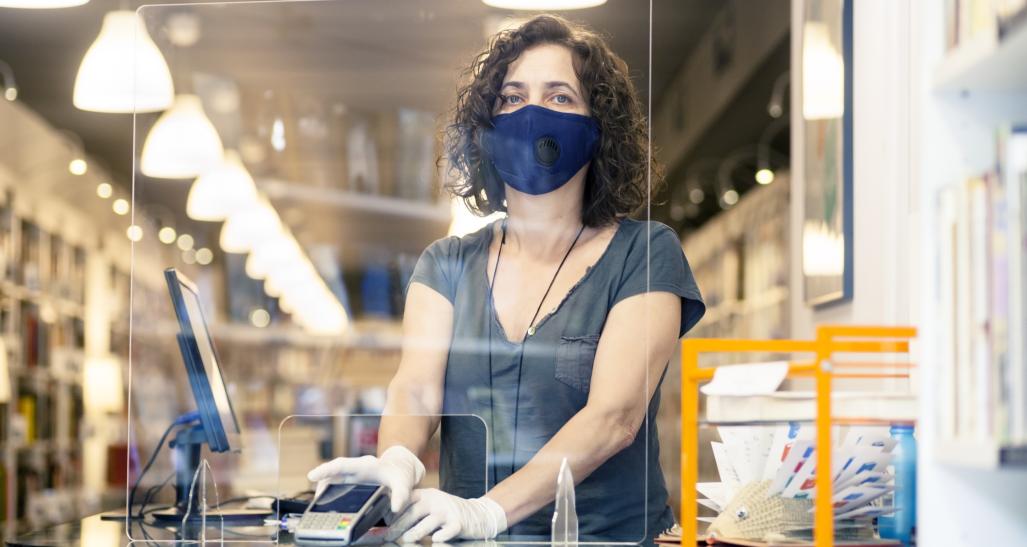
Dan Jablons, owner of consulting firm Retail Smart Guys, has continued to be amazed throughout the pandemic. The upside? Many of those surprises have been related to the creativity he’s seen among retailers doing whatever they can to keep moving forward. His firm, which works with independent retailers in 14 countries, specializes in open-to-buy, inventory planning, business forecasting and cash flow. And there’s been plenty to tackle.
Jablons — who also has made a name for himself as an actor, singer and improv artist — spoke with NRF about the “breathtaking craziness” of the season, how conversations with retailers have progressed, and how helpful maintaining a sense of humor can be.

In terms of cash flow and performance, how has your advice for retailers shifted since the beginning of the pandemic?
We are certainly inviting retailers to review their expenses, to convert as much of their fixed expenses as possible to variable expenses, and to “right size” their businesses.
That said, cash flow comes from the proper management of their flow of inventory, so we continue to be hypervigilant on planning sales and then planning purchases to maximize cash flow. I can evaluate expenses and adjust them, but the way to cover those expenses properly is to do a better job of planning sales and inventory levels.
Anecdotally, how are retailers continuing to move forward as this stretches on? What’s surprised you?
What has amazed me through this entire pandemic has been the incredible creativity I see in independent retail. We have retail clients who re-invented themselves in so many ways, and came up with simply brilliant ideas to continue to engage with customers and move product. Some of those even produced sales that beat last year.
One client operates a fishing store. They’re in Texas, so they had to shut down early. They had this fishing reel that was $1,200 retail. In the middle of the pandemic, they sold raffle tickets for it. But they only sold 12 of them, at $100 each. So, there was a one in 12 chance of winning the reel that everybody wanted. And they sold out in 45 minutes.
I asked later if they had done more of these, and they said 45 of them. They were not all $100 tickets: Sometimes it was a T-shirt and a hat. But it became legendary. Other retailers started doing it after that. It was a fascinating level of innovation.
What are the opportunities for lessons learned for the future?
It’s a similar lesson to what we learned during the recession in 2007. The fundamentals of great retailing are preservation of margin and faster turn. That doesn’t happen without a solid, detailed analysis, and a great strategic plan that stretches into the future.
The retailers that make it through this will be the ones that understand inventory is their biggest expense, their greatest asset, and the element of the business that requires the greatest amount of their focus.
That requires a combination of art and science. The “art” is the ability to pick out great styles, great colors, and know the customers’ preferences well. The “science” is the hard data analysis of what needs to arrive, by when, and what should the ending inventories be each month, and each season, to ensure proper cash flow.
It’s the combination of the two that makes good stores great.
And as for that sense of humor?
Nobody really wants to have dry conversation. I’ve heard some say that talking with a consultant can be like going to the principal’s office. But we try to approach everything with a bit more lightness and fun.
We also try to tie things back to the moment when they signed the lease, when they were super excited about their store: “I’m doing it! I’m creating it! I’m making this happen!” The grand opening is exciting, but then day three hits, and it’s quiet. And then day 33, and the invoices are due.
We try to bring them back to that excitement and fun of day one or two. As consultants, especially retail consultants, we sometimes have to be the client’s best friend. Even in awful times like these. We can laugh a little bit. We don’t really have a dog in the fight, except that they win. So, we’ll be shoulder to shoulder — but six feet away.
